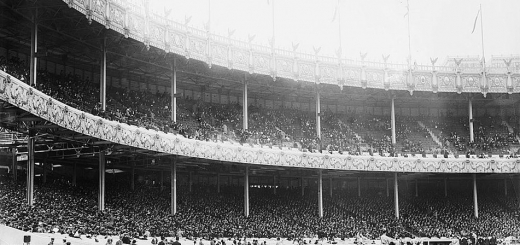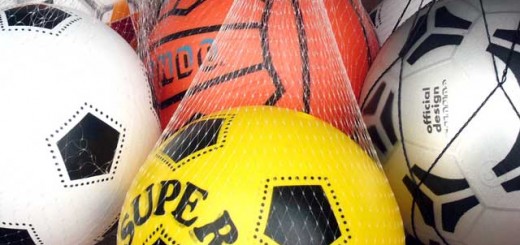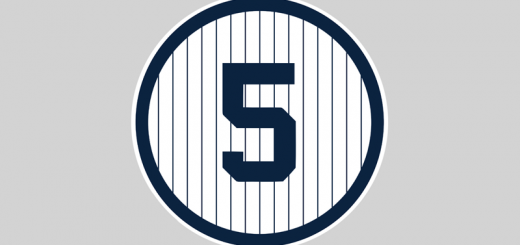Joe DiMaggio: An Appreciation
How good was Joe DiMaggio? You’ve heard of his name, but unless you are a baseball historian and/or statistics freak, you probably don’t really know the details of his career, other than that he must have been pretty good – he once was married to Marilyn Monroe. I wouldn’t have even given a thought to writing about the iconic New York Yankee until a friend told me I should read the Richard Ben Cramer biography “Joe DiMaggio – The Hero’s Life.” After reading the book, and looking over the statistics of his baseball playing career, I can now say I was so impressed with his career stats/playing resume that I had to write this column to let others know just how good this man was.
The New York Yankee dynasty era of Babe Ruth seemed to be winding down in the early 1930’s. Babe Ruth was gone by the end of the 1934 season. The team did not win pennants in 1933, 1934 and 1935. Joe DiMaggio was a very celebrated minor leaguer (that possessed the five tools of a great ballplayer – hit for average, field your position, throw, run the base paths and hit for power) that was set to join the Yankees for the 1936 season, as the team hoped to get back to winning pennants. Once he settled in, DiMaggio was an instant success as he led the Yankees back to being the Bronx Bombing best team in baseball, as, in the next four years, they proceeded to win the next four straight American League pennants AND World Series championships.
DiMaggio, batting third in the lineup even though he was a 21-year-old rookie, put together the following first four years’ stat lines in helping lead the Yankees to those four titles: 1936 – .323 BA, 29 HR’s, 132 Runs, 125 RBI; 1937 -.346 BA, 46 HR’s, 151 Runs, 167 RBI; 1938 – .324 BA, 32 HR’s, 129 Runs, 140 RBI; 1939 – .381 BA, 30 HR’s, 108 Runs, 126 RBI. That’s in a 154 game season. Without steroids. Sure would be nice fantasy numbers, wouldn’t they?
In his 13 year career, his Yankees won ten out of 13 American Leagues pennants and nine out of 13 World Series championships, all on teams where he was likely the star of the team in each of those years that he played (although Lou Gehrig was still on the team for a few of those years). His career would have been longer but he spent the years 1943, 1944 and 1945 in the army in World War II. Those years would have been his age 28 through 30 years (a baseball players true prime years are often considered years 26 through about 32), meaning he missed three of the best years of his career.
Did I forget to mention that he once had a 56 game hitting streak? Which was immediately followed by a 16 game hitting streak, which made an overall stretch of 72 out of 73 games with at least one hit in it.
Or that in the post depression 1930’s and the pre-war years leading up to World War II before television, he became a national figure, a heroic, mythological figure that the entire nation looked upon as their own as they followed his exploits through the newspapers and newsreels as he battled for hitting streaks, pennant races and World Series games.
The best way to explain who Joe DiMaggio the baseball player was is to compare him to comparable players of today’s era. I think three players come closest to capturing who Joe D. was as an all round player, Derek Jeter, Miguel Cabrera and Mike Trout, all of them classifiable as elite All Star players.
Jeter was the classy ballplayer, iconic national figure type, the unquestioned leader of the Yankees (Like Joe D., he was Mr. Yankee, although Joe became Mr. Coffee), and the guy who seemed to always be in the playoffs and World Series. But he “only” won five championships in his 19 full years. His career stat numbers calculated based on a 162 game season would be .311 BA, 15 HR’s, 102 Runs, 77 RBI with 21 SB. 14 out of 19 All Star Games and a guaranteed Hall of Fame player.
Cabrera was a run producing stud similar to Joe D. Seemingly always amongst the league leaders every year in Batting Average, Home Runs, Runs and RBI, Cabrera even won a Triple Crown and two MVP’s. His run producing prowess is very similar with a 162 game “line” of .320 BA, 35 HR’s, 104 Runs and 123 RBI per season. Nine out of twelve All Star Games and very likely a Hall of Fame player.
Trout is similar because he, like Joe D. was a five tool, centerfielder who came into the game at similar young age (20) with all of the similar phenomenal expectations, and who set the baseball world on its ear with his incredible skills and exploits. Three years in the league, three All Star Games and potential to be even better. His lines, very similar in a lot of ways to Joe DiMaggio’s first two years are (as of writing of this article) .307 BA, 32 HR’s, 121 Runs, 101 RBI with an average SB of 35. He is young and needs to keep his career stats up, but he too could be a Hall of Famer one day.
Joe DiMaggio’s split numbers would be .325 BA, 34 HR’s, 130 Runs and 143 RBI per year for his 13 year career. 13 out of 13 All Star Games and three MVP awards. He would be the approximate equivalent of Derek Jeter, Miguel Cabrera and Mike Trout all rolled up into one amazing player, except it would seem like his team would be winning the World Series every year. Yes, more than the outstanding “fantasy baseball numbers” he produced, it is the Joe DiMaggio knack for winning championships that resonates the most. His career was truly the stuff of legends.




